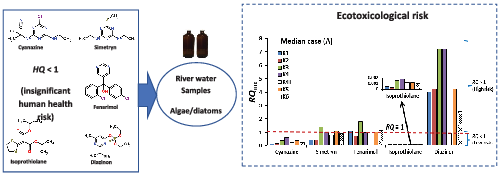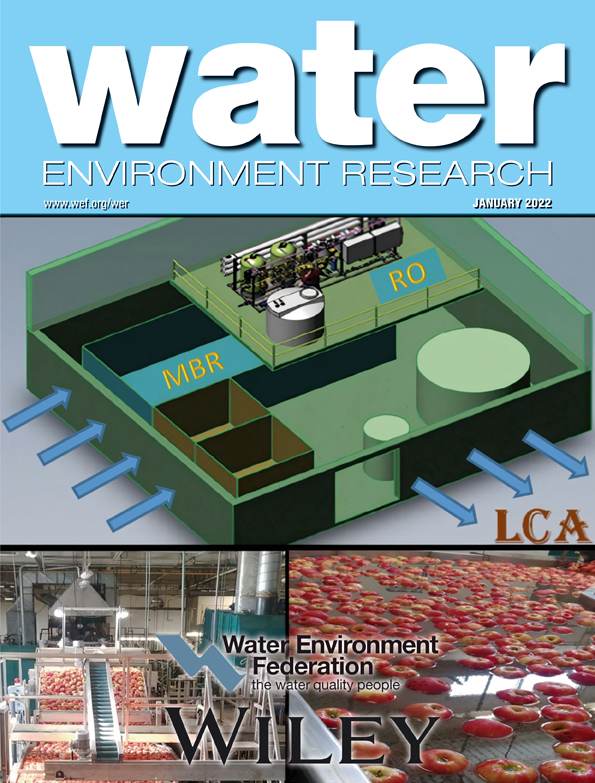Ecotoxicological and human health risk assessment of selected pesticides in Kurose River, Higashi-Hiroshima City (Japan)
Abstract
This study conducted an integrated approach combining monitoring and risk assessment of pesticides in Kurose River and its catchment area, Japan. Water samples (n = 168) were collected every month for 1 year (March 2016 to February 2017). Pesticides (cyanazine, simetryn, fenarimol, isoprothiolane, and diazinon) were extracted by Sep-Pack C18 cartridges and analyzed using a reversed-phase HPLC-UV system. The pesticides were also determined in non-target organisms Red algae (Audouinella sp.) and diatoms (Cocconeis placentula) from the river. Based on the residual concentrations, an ecotoxicological risk assessment was conducted using the risk quotient (RQ) index. The human health carcinogenic and non-carcinogenic risk assessments were evaluated using hazard quotients (HQ). Results showed that cyanazine was the most commonly detected (64%), followed by simetryn (58%), and diazinon (57%) in all the sample sites (n = 12). Except for isoprothiolane, the pesticides were highest in spring followed by summer, autumn and winter. Based on extreme values (ex), non-acceptable ecotoxicological risk was obtained for diazinon (RQex = 21.317), cyanazine (RQex = 3.129), simetryn (RQex = 8.577) and fenarimol (RQex = 10.855), while that of isoprothiolane (RQex = 0.013) was negligible. Based on the HQ estimates, all the pesticides were below the threshold value of 1, hence pose no significant health risks to humans.
Practitioner Points
- Pesticides affect non-target organisms in rivers and other aquatic systems
- Pesticides were frequently detected in spring and summer and accumulated in red algae and diatom
- The detected pesticides posed high ecotoxicological and human health risks
Graphical Abstract
To assess the impact of the some pesticides on the Kurose River, Japan, an integrated approach combining monitoring, assessment of environmental toxicity and human risk was used. Cyanazine was the most commonly detected, followed by simetryn and diazinon. Average concentrations of the selected pesticides were generally higher in spring followed by summer, autumn and winter. The study showed that there were unacceptable environmental toxicity risks for diazinon, cyanazine, simetryn and fenarimol, while the environmental risks for isoprothiolane were low. For adults and children, the risk was highest for diazinon, while isoprothiolane showed the lowest risk to humans.
CONFLICT OF INTEREST
The authors declare that they have no conflict of interest.
Open Research
DATA AVAILABILITY STATEMENT
The data that support the finding of this study are available from the corresponding author upon reasonable request.





